The Continuum of Programs & Least Restrictive Environment (LRE):
LRE (Least Restrictive Environment) is not a specific place but a guiding principle in a child's education. It ensures that students with disabilities are educated alongside their non-disabled peers to the maximum extent possible. Removal from the general education setting should only occur when a student’s needs cannot be met, even with supplemental aids and services. Since every child is unique, LRE may look different for each student, depending on their individual needs and abilities.

The IEP Team collaborates to review a student’s strengths, needs, and learning profile to determine appropriate programs and services for each subject. Progress toward IEP goals and objectives helps guide decisions about transitioning to a less restrictive environment when appropriate. Additional academic and basic skills support may be available in these settings. For more information on least restrictive options, families should consult their case manager
In-Class Resource (ICR)
In-Class Resource instruction is implemented at both the elementary and middle school levels for Reading and Writing, Mathematics, Science and Social Studies. ICR provides special education support within the general education classroom through a co-teaching model, where a general education teacher and a special education teacher work together. This inclusive approach allows students with disabilities to learn alongside their peers while receiving specially designed instruction, accommodations, and modifications as outlined in their IEPs. The goal is to promote access to the general education curriculum, foster independence, and encourage peer interaction.
Pull-Out Resource
A Pull-Out Resource Program is an instructional model for students in grades K-8, providing small-group instruction to support academic progress in reading, writing, and mathematics. This model serves up to 9 students at the elementary level and 12 students at the middle school level, offering subject replacement opportunities with a modified version of the grade-level curriculum. Instruction is tailored to each student’s IEP, using supplemental resources to ensure learning is both skill-level and age-appropriate. Led by a certified special education teacher, the program focuses on individualized instruction, targeted skill development, and academic success while helping students build independence in the general curriculum. Efforts are made to transition students into general education classes by teaching compensatory skills and strategies to support their long-term success.
Autism Program
The Autism Program is designed to support students in developing skills across language pragmatics and communication, social interaction, academics, functional life skills, and vocational skills, with individualized academic coursework tailored to each student's needs. This model serves up to 6 students per classroom and uses a behavioral approach with data-driven instruction. The program tracks skill development while emphasizing communication, social skills, play, engagement, self-management, and the replacement of challenging behaviors. Students receive support from certified Special Education teachers, related service providers, paraprofessionals, and the district behavior specialist, fostering a collaborative team approach. Located at Central and ALT
Emotional Regulation Impairment (ERI) Program
The ERI Program supports special education students with social, emotional, and behavioral challenges that significantly impact learning. It focuses on social-emotional growth, behavioral support, and academic progress. Following the grade-level curriculum, lessons are specially designed based on IEP goals. The program offers flexible support, from self-contained to full inclusion, depending on individual needs. A team including the ERI special education teachers, trained paraprofessionals, Child Study Team, and school counselor provides ongoing support. Behavior plans, social-emotional strategies, and counseling goals are tailored to each student, with collaboration between ERI and general education staff to ensure a positive school experience. Located at ALT
Learning and/or Language Disabilities (LLD) Program
The LLD Program is a self-contained program designed to provide academic and social support in core subjects using a modified curriculum guide and specialized instructional strategies with an emphasis on language-based instruction. The program delivers intensive interventions to support expressive and receptive language development, as well as written language comprehension, in alignment with state curriculum standards. Recognizing that students may have inconsistent levels of functioning socially, emotionally, and academically, instruction is designed to begin at an appropriate level and progress at each student’s own pace, fostering confidence and success. Multi-sensory approaches are integrated into language arts instruction to enhance learning. Depending on their individual strengths and challenges, students may be included into general education for academic subjects, social modeling, or cooperative learning activities, all carefully coordinated between special education and general education teachers as specified in each student’s IEP. Located at Woodland and WMS
Preschool (Integrated Preschool)
The Integrated Preschool Program provides a safe, nurturing, and engaging learning environment for three- and four-year-old children, including those with and without special needs. This full-day program uses a developmental approach, immersing children in a variety of hands-on activities such as movement, art, science, literacy, math, music, cooking, dramatic play, and sensory experiences, all connected to different themes. Children participate in whole-group activities, small-group learning with teachers, and independent exploration during center time, fostering readiness skills, language development, and social-emotional growth. The program follows the New Jersey Department of Education’s Preschool Teaching and Learning Expectations and is designed to meet the individual needs and abilities of each child. Research has consistently shown that all students benefit from learning in an integrated environment, where peer interactions and inclusive instruction promote development and success for every learner. Located at Mt. Horeb
Preschool Disabled (PSD)
The PSD Program is a self-contained classroom designed to support young learners through a variety of teaching modalities tailored to their individual needs. Instruction aligns with the New Jersey Core Curriculum Standards and incorporates whole-group, small-group, and one-on-one instruction to ensure each student receives specially designed learning experiences. Lessons and activities are designed to support academic, social, and developmental growth, utilizing a range of instructional tools and manipulatives to engage all learners. When educationally appropriate, inclusion opportunities with support are available to help students successfully integrate into general education settings. Located at Mt. Horeb
Last modified on Thursday, April 24, 2025

 Contact Us
Contact Us